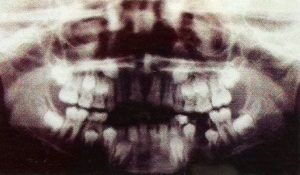
Frequently Asked Questions
As adolescents enter higher grades in school, they may want to expand their independence with daily habits and food choices. Many times they can even purchase their foods independently. This is a challenging time to enforce good habits to insure good overall health. To insure your teenage child continues to have healthy teeth and body:
- Remind your child of the connection of good brushing habits with health, pleasant breath and good appearance. Brushing twice a day with fluoride toothpaste, flossing and using Fluoride rinse are still the best measures to keep cavities away. Provide your teenager with different choices and encourage their use in a positive way.
- Teenagers tend to gravitate towards drinking soda or energy drinks. Although most know that soda is not a good nutrition source, many are led to believe that energy drinks are a healthier cholce. Most of these energy drinks have as much sweeteners as soda, which can lead to getting cavities and getting fat as well. Remind your adolescent about the danger of drinking sweet beverages on a regular basis. Drinking plain milk and plain water are always the best options.
- As teenagers may be able to purchase their own snacks, remind them that frequent snacking with chips or candy not only will give them cavities, but also will make them gain weight. Obesity is very prevalent in our society and good nutrition is very important to stay healthy.
As children grow into their teens and their habits of eating and brushing change, so does their risk for getting cavities. During regular dental checkups, your dentist will be able to identify if your teenager is at risk, and continue to recommend fluoride varnish applications if needed. As a general rule, if your teenager is not brushing consistently twice a day, or not brushing well enough, snacking several times during the day, eating or drinking sweet snacks in between meals, has had cavities in the last two years, is wearing braces or retainers, or is taking medicine that makes the mouth dry, he/she could benefit from having fluoride varnish applications even well into adolescence.
The gums around the lower teeth may become red and sometimes bleed easily when brushing. The main reason for this relates to improper cleaning of the teeth and gum-line. If the teeth are not straight, they may be more difficult to clean. The gums and teeth need to be brushed regularly at least twice daily with fluoride toothpaste. Dental flossing can help clear up the situation as the floss gets between the teeth and removes plaque from areas that the brush cannot reach. Parents and children can tell when the gums are getting healthier because the bleeding decreases and the gums become pink and hard. One special situation that should be mentioned is called pubertal gingivitis. This condition can persist even though the mouth appears well cleaned. It is due to the hormonal changes that occur in the body at puberty. It is usually a passing phase, and with persistent proper hygiene, the gums will eventually return to the healthy, pink color.
Many teens start to use mouthwash regularly because they become more interested in their personal hygiene. The use of mouthwash should not be a substitute for regular, good tooth brushing with fluoride toothpaste that includes brushing the tongue as it can contribute to a stale mouth odor. When using a mouthwash, it is good to use one with fluoride or proven anti plaque benefits.
Children vary in their development and so they will vary when they get braces. As well, the type of treatment being undertaken will determine when orthodontic treatment begins, and it depends on the child’s individual needs and expected cooperation with the treatment.
Orthodontics may be undertaken early, when there are both primary and permanent teeth in the mouth. Sometimes it is all that is required or it could be the first part of a lengthy treatment. Commonly orthodontics begins later (after 10 years of age) when the permanent teeth have come in and they can be guided into the ideal position.
The decision to remove teeth will depend on the orthodontic diagnosis and treatment plan. There are different approaches to treatment and the plan depends on the child’s bite, the amount of room required to accommodate all teeth and how much they are expected to grow. The decision on the need to remove teeth will be different for every child, and your best bet is to coordinate the opinions of your dentist and your orthodontist.
 A panoramic x-ray is an x-ray film taken outside of the mouth by a machine that rotates around the head. This type of x-ray gives the dentist a whole view of the teeth and jaws. When dealing with children, its main use is to examine the developing dentition. The dentist can see the presence or absence of teeth without having to take several x-rays inside the mouth. It is a good way for screening out all types of problems but is not suitable for tooth decay diagnosis.
A panoramic x-ray is an x-ray film taken outside of the mouth by a machine that rotates around the head. This type of x-ray gives the dentist a whole view of the teeth and jaws. When dealing with children, its main use is to examine the developing dentition. The dentist can see the presence or absence of teeth without having to take several x-rays inside the mouth. It is a good way for screening out all types of problems but is not suitable for tooth decay diagnosis.
We realize that cleaning the mouth while wearing braces is not an easy thing to do. It takes more time and requires more effort. The person who puts the braces on should spend time instructing you what to do.
Three things can be suggested for home care.
- Brushing may require a standard brush for regular cleaning and a special brush (small end-tufted brush) to clean around the hardware.
- Special dental floss threaders which enable cleaning between teeth that cannot be done with wires in place.
- Fluoride mouth rinse or fluoride gel should be used daily because children wearing braces are more prone to tooth decay.
Be very alert to having good hygiene and diet while wearing braces! Nothing is more disappointing to children, parents and clinicians than having to cope with gum problems and tooth decay when the braces are removed.
Wisdom teeth, or third molars, may come into the mouth as early as 16 years of age but usually they come in several years later.
This question is prompted by hearing stories about wisdom tooth problems. These problems are often due to inadequate space in the back of the mouth for these teeth to grow in. As a result, they only partially come into the mouth, making proper cleaning very difficult. The gums around them tend to become infected causing pain and swelling, requiring the wisdom tooth removal. When wisdom teeth are removed under these conditions the extraction and recovery can be difficult. Many teenagers are able to grow their wisdom teeth without problems, and this is the ideal situation. The conditions that lead to problems with the wisdom teeth can be detected by your dentist during regular dental visits. Since the surgery is easier when the roots of the teeth are not fully formed, consult with your dentist what are the specific recommendations for your child’s wisdom teeth.
The current trend for young people to have facial jewelry can sometimes cause dental damage. Tongue studs, for example, can contribute to breakage of back teeth. Lip rings can get caught in clothing or elsewhere and tearing of the lip can occur. The jewelry needs to be well-cleaned as it often is in areas where infection can easily begin. Whenever these items or tattoos are put into the mouth, they should be done under the cleanest possible conditions.

